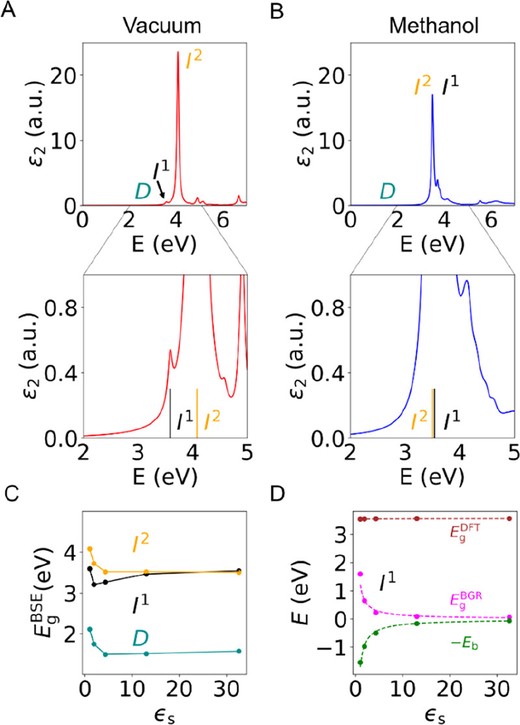Elucidating Solvatochromic Shifts in Two-Dimensional Photocatalysts by Solving the Bethe–Salpeter Equation Coupled with Implicit Solvation Method

Abstract
Many studies have focused on tailoring the photophysical properties of two-dimensional (2D) materials for photocatalytic (PC) or photoelectrochemical (PEC) applications. To understand the optical properties of 2D materials in solution, we established a computational method that combined the Bethe–Salpeter equation (BSE) calculations with our GW-GPE method, allowing for GW/BSE-level calculations with implicit solvation described using the generalized Poisson equation (GPE). We applied this method to MoS2, phosphorene (PP), and g-C3N4 and found that when the solvent dielectric increased, it reduced the exciton binding energy and quasiparticle bandgap, resulting in almost no solvatochromic shift in the excitonic peaks of MoS2 and PP, which is consistent with previous experiments. However, our calculations predicted that the solvent dielectric had a significant impact on the excitonic properties of g-C3N4, exhibiting a large solvatochromic shift. We expect that our GW/BSE-GPE method will offer insights into the design of 2D materials for PC and PEC applications.